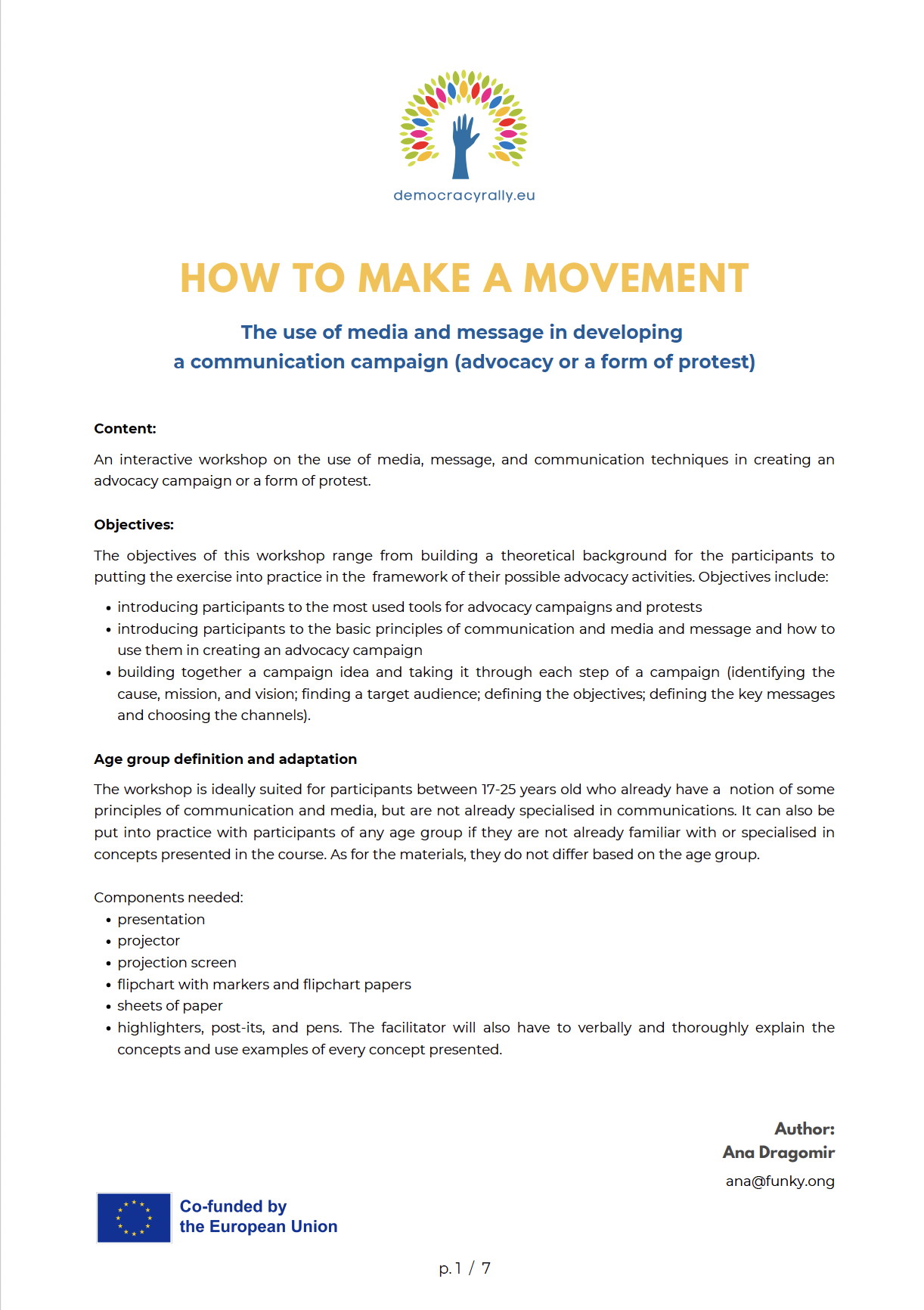How to make a movement
The use of media and message in developing a communication campaign
Advocacy as a form of protest
Objectives
The objectives of this workshop range from building a theoretical background for the participants toputting the exercise into practice in the
framework of their possible advocacy activities. Objectives include:
- introducing participants to the most used tools for advocacy campaigns and protests
- introducing participants to the basic principles of communication and media and message and how touse them in creating an advocacy campaign
- building a campaign idea together and taking it through each step of a campaign (identifying thecause, mission, and vision; finding a target audience; defining the objectives; defining the key messagesand choosing the channels).
Democracy Skills Addressed
- A strong healthy democracy involves a powerful and impactful voice of civil society. The workshop addresses issues such as how to make the cause you are advocating for known among the masses, but also touches on subjects such as how to communicate it to the authorities in the form of petitions, debates, or manifestations. The course makes an introduction to the basics of advocacy and activism and the difference between them. It then proceeds to explaining how to use communication tools in order to have a successful advocacy campaign.
Format
Possible time formats
The workshop cannot be held in less than 2 hours, and should be divided into the following sections:
45 minutes for the theoretical introduction
15 minutes for the interactive game
45 minutes for campaign building
15 minutes for debriefing
In case the programme allows and the workshop can take more than 2 hours, an additional half an hourwould be recommended in order to add 15-min Q&A sessions after the theoretical part and before theinteractive game and for the debriefing session. Based on the group size, more than half an hour could beneeded for the debriefing and feedback session because of the potentially high number of teams andcampaign ideas.
Possible Group sizes
The size of the group may differ from a minimum of 8 participants up to 30 participants. Regardless of thenumber of participants, they will be split into small groups of 4-5 participants for the third part of theworkshop: campaign making. The rest of the activities are supposed to take place with the whole group.
The workshop is divided into 2 sections, the theoretical one and the practical one, each one having two parts. At the beginning of the presentation, it is advised to make a small introduction of the facilitator and their expertise in the field.
In the end, it is mandatory to have a debriefing and feedback session (not shorter than 15 minutes, depending on how many small groups are there going to be – minimum of 7 minutes per group for their presentation and feedback).
Age Group
Age group definition and adaptation
The workshop is ideally suited for participants between 17-25 years old who already have a notion of some principles of communication and media, but are not already specialised in communications. It can also be put into practice with participants of any age group if they are not already familiar with or specialised in the concepts presented in the course. As for the materials, they do not differ based on the age groups.
Number of participants
Possible group sizes
The size of the group may differ from a minimum of 8 participants up to 30 participants. Regardless of the number of participants, they will be split into small groups of 4-5 participants for the third part of the workshop: campaign making. The rest of the activities are supposed to take place with the whole group.


